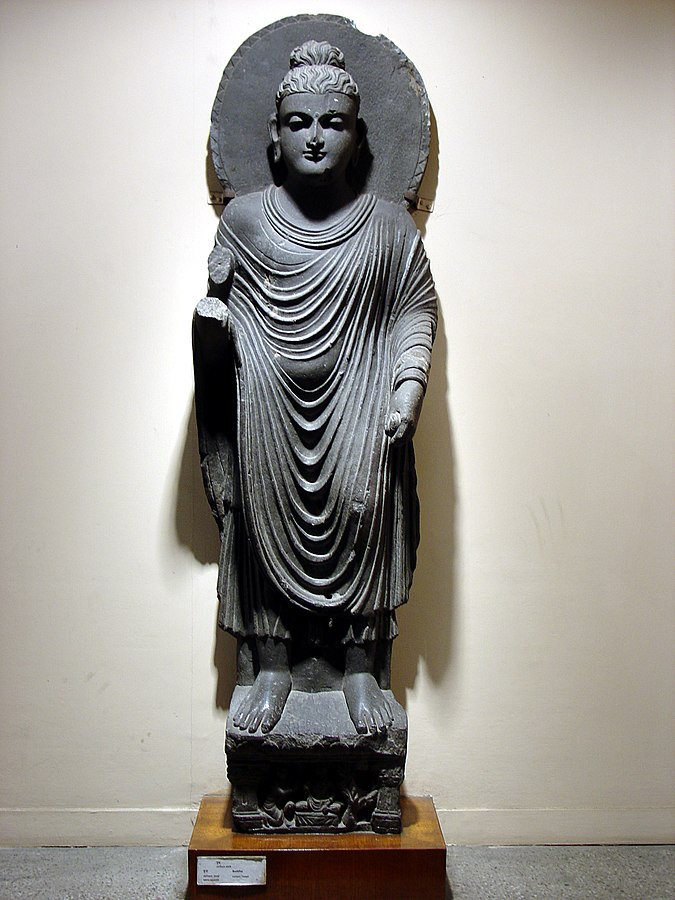
Standing Buddha
Gandharan, from Loriyan Tangai
Kushan period, 1st - 3d century AD
Indian Museum, Calcutta
This and similar Gandharan statues were produced both in the ancient kingdom of Gandhara itself, and in nearby regions, most of which are now within the borders of present-day Pakistan. Their style is clearly indebted to classical Greco-Roman art, which must have been known both from Hellenized regions to the west and from cultural transmission along the trade routes linking northwest India to the Mediterranean world.
Stylistic elements thought to represent western influence include their heavy drapery, "Western" facial features and hair styles, and "classical" bent-leg postures, although no one would mistake these for classical Western statues, even aside from their Buddhist subject matter. Considerations like the ratio of the height of the figures to the height of the head (varying between 4:1 and 5:1), and the style of the hair (for example, wavy versus curly), help to define substyles within the overall type.


